Engagement rings usually symbolize that next step towards a happy ever after. For some couples, it means the start of the rest of their lives. It’s why many people still put a lot of thought on the type of engagement ring that they buy.
If you want to have a unique symbol of your partnership, why not try colored gemstone engagement rings?
What Colored Gemstone Engagement Rings Mean
Engagement rings are a very predictable bunch, with so many couples opting for the classic diamond. However, there’s a great lot that has been increasingly turning to colored stones when crafting their engagement rings.
Colored engagement rings reflects the boldness of the times, with couples not being afraid to experiment and express themselves. If you are one of those who want a punch of color in your engagement ring, this article will guide you on how to go about getting one.
How Engagement Rings Have Evolved Over Time
Engagement rings often symbolize the start of a couple’s forever. It symbolizes that they are ready to take the next step in the relationship. As such, the bride-to-be now wears the resounding “Yes” to commitment around her ring finger.
However, this ritual of giving engagement rings only came to America in the 1840s. Other countries and cultures also have their own versions of engagement rings. For instance, ornate and vintage-like rings marked the couples in Edwardian times. Many jewelers had to work around a large diamond while adding many more smaller ones, thus the detailed appearances of many antique rings.
Nowadays, with the trend of diversity, the privilege of more choices, and the thrust of ethical buying, new trends on engagement rings have emerged. Before, many brides-to-be wore sparkling clear diamonds. Some are now starting to ask, “Can engagement rings have coloured stones?”
Let’s take a look at this new trend for colored gemstones in engagement rings, and see why it’s such a big trend these days.
Color Psychology in Jewelry
Just like when creating your space or picking out a great OOTD, color plays a huge role in this aesthetic decision. Many people understand colored gemstones in relation to what they symbolize and bring to their owners.
When you wonder, “What does color mean in engagement rings?” many people believe that the color of your chosen gemstone would represent or influence the way you experience your relationship altogether. For instance, diamonds—the favorite go-to gemstone for engagement rings—symbolize love, strength, and well-being. These are good foundations for a long-lasting and happy romantic partnership.
Choice Gems: These Colored Gemstones Shine For Engagements
Deciding to expand your choice of engagement ring stone to colored ones definitely gives you more room to work with. But even in the world of colored precious stones, some stand out better as options for engagement ring stones. It might be wise to start with these precious gems that not only look brilliantly beautiful, but also hold significantly romantic meanings, too.
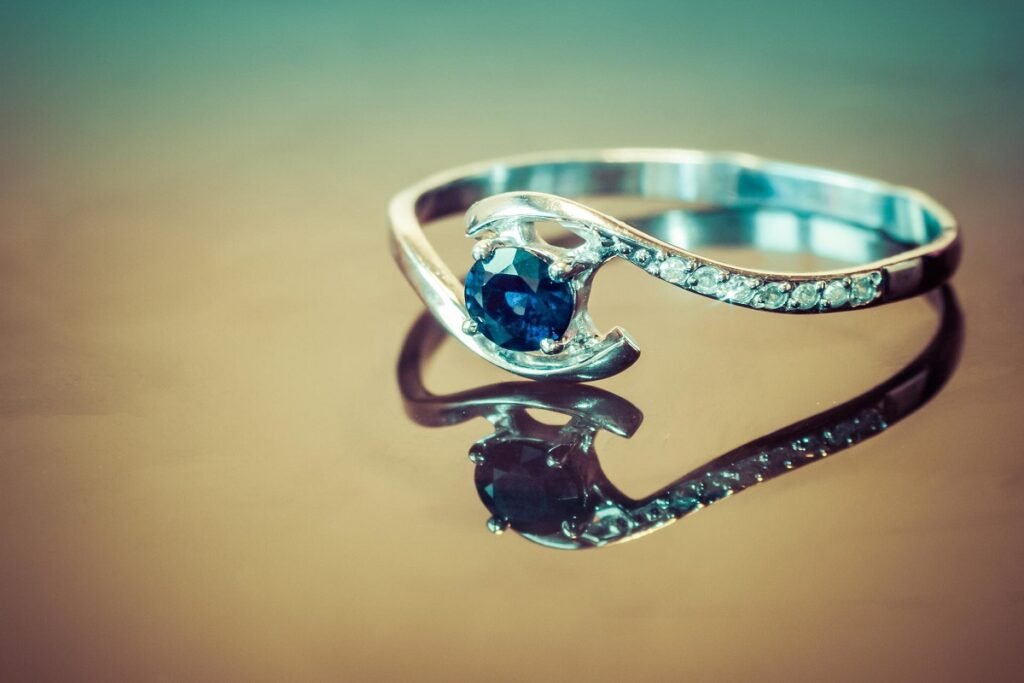
Sapphire
If there was a colored gemstone that can be the perfect substitute for diamonds, it would have to be the sapphire stone. Its lush and deep blue hue already catches people’s eyes. In addition, the sapphire’s superior hardness gets the 9th ranking on the Mohs scale.
The harder and tougher a gemstone is, the more options you will have in terms of ring setting. This makes it one of the even more dynamic colored gemstone engagement rings to have.
Considering how striking the sapphire’s color is, you may want to ask, “What does a sapphire engagement ring symbolize?” Sapphires actually showcase loyalty and devotion between couples. Check out this JARED review to see how mixing stones can look even better on engagement rings.
Ruby
If a cool deep color isn’t your style in colored gemstone engagement rings, how about a warmer, earthier precious stone? Red as a color comes to mind, but some may wonder, “What does a red engagement ring mean?”
Rubies come in the deepest of reds, and they also feature quite high on the Mohs hardness scale. Its deep hues make quite a statement on any outfit. Plus, you can easily wear it wherever you go as rubies are known for their durability and hardness.
If there was one downside to opting for a ruby engagement ring, it may be the price tag. Jewelers consider rubies to be very valuable and rare gemstones, so you may want to keep this in mind when coming up with a good engagement ring design.
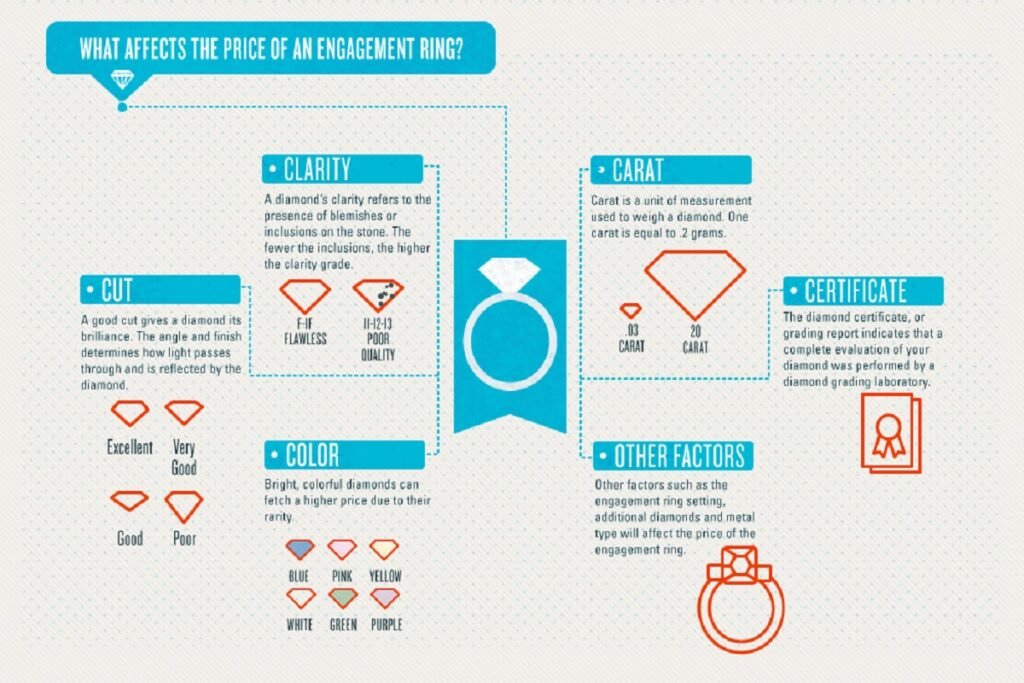
Champagne Diamond
Diamonds may be the most staple stone in engagement ring history. But that should not mean you have to go with this trend. Colored gemstones engagement rings started to become more popular because of the diversity and creativity that their aesthetics bring.
If you want to be more experimental but would also not want to let go of the classic aesthetic, how about going with a champagne diamond instead? Champagne diamonds are unique in that they have a golden brown sheen, mimicking the bubbly.
Some may see champagne diamonds as a good starting stone for adding colors to your collection. It certainly has a faint, elegant color that’s more neutral for a classic touch. What’s more, it’s a generally less expensive diamond altogether, giving you all the qualities of a diamond—minus the hefty price tag.
Emerald
Some may relate this richly green gemstone to power and wealth. Though they’re not bad as virtues while getting into the long haul, they may not seem as romantic to some. However, did you know that the emerald stone also holds another meaning? The emerald stone symbolizes new beginnings—making it the perfect companion at the start of your journey together as an engaged couple.
Not only that, emeralds can last for quite some time. It ranks 7.5 to 8 on the Mohs scale, making it quite resistant to scratches. Plus, you can choose from a wide range of green hues, from yellow-green to startling green up to bluish green, it’s a colored stone that won’t disappoint.
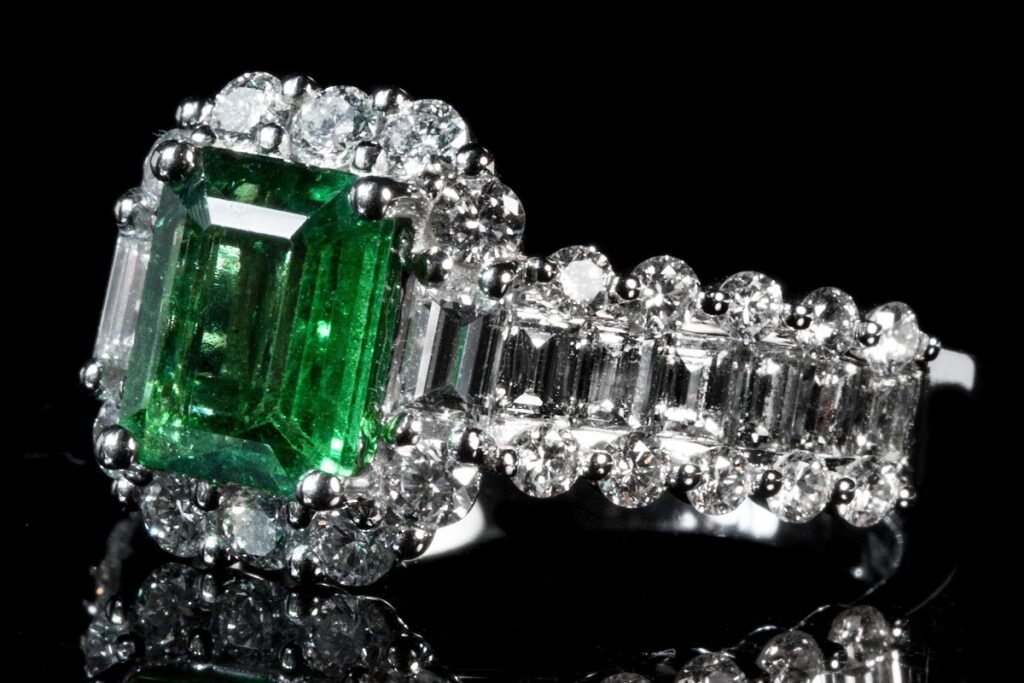
Morganite
If you love playful jewelry, you may have considered getting a rose quartz engagement ring. Many individuals, including celebrities, have been enamored by the rose quartz due to its hue. However, there’s a much tougher and harder gemstone with the same pink blush color: the morganite.
On the one hand, no one can deny that the pink morganite shimmers like a diamond with a blush. In terms of brilliance, durability, and luster, the pink morganite wins by a landslide. It’s far tougher than the rose quartz, which makes it perfect for everyday use with minimal attention. Due to its cut and composition, the pink morganite gives a diamond-like sparkle with the added value of minimal inclusions.
However, the rose quartz remains popular for a reason, mostly due to its association with love. But if one were to look at the morganite’s symbolism, you’d be surprised to find that it’s just as suitable as a colored gemstone engagement ring. It actually stands for tranquility and health protection, key aspects when one thinks of long-term commitments.
Gemstone Not Meant For Engagement Rings
Since there are so many gemstones available, it’s almost tempting to just choose whatever stone is available. Realistically, however, gemstone choices can be very limited, especially for engagement rings.
Why are we limited? Many of the beautiful colored stones may be too soft for engagement rings. Keep in mind that engagement rings usually receive quite the wear and tear with everyday use. It’s best to avoid these gemstones as they may not last with all your succeeding memorable moments.
Opal
The opal’s energy seems to be very fitting for jewelry related to romance. This stone supposedly heightens one’s emotions and frees a person from inhibitions. Opals also encourage faithfulness in a relationship.
However, this precious gemstone and birthstone ranks very low on the Mohs hardness scale. Additionally, it’s always in danger of cracking and shattering if it gets too dry. Some jewelry experts even noted that opals rarely last long enough for heirloom pieces, unless they are properly preserved.
Lapis Lazuli
A deep blue stone on an engagement ring always adds an alluring touch to one’s ensemble. After all, the likes of Princess Diana’s iconic engagement ring has always been a fan favorite. Some may think that other more affordable options like the Lapis Lazuli may suffice as a good deep blue stone for engagement rings. Sadly, this isn’t the case.
The Lapis Lazuli may be among the softest precious stones at a 5 to 6 Mohs rating. Compared to other stones, it can break with ample pressure or if the Lapis Lazuli drops on the floor. Thus, some people would prefer to have it as a decorative stone or as small additions to a bigger piece.
Moonstone
From the name alone, some jewelry collectors consider moonstones to be a mix of magic and mystery. As a precious stone, its greatest feature is the interplay of light on its surface. Additionally, moonstones embody balance and enhance intuition. However, despite its beautiful color and meaning, it may not be such a good stone for an engagement ring centerpiece.
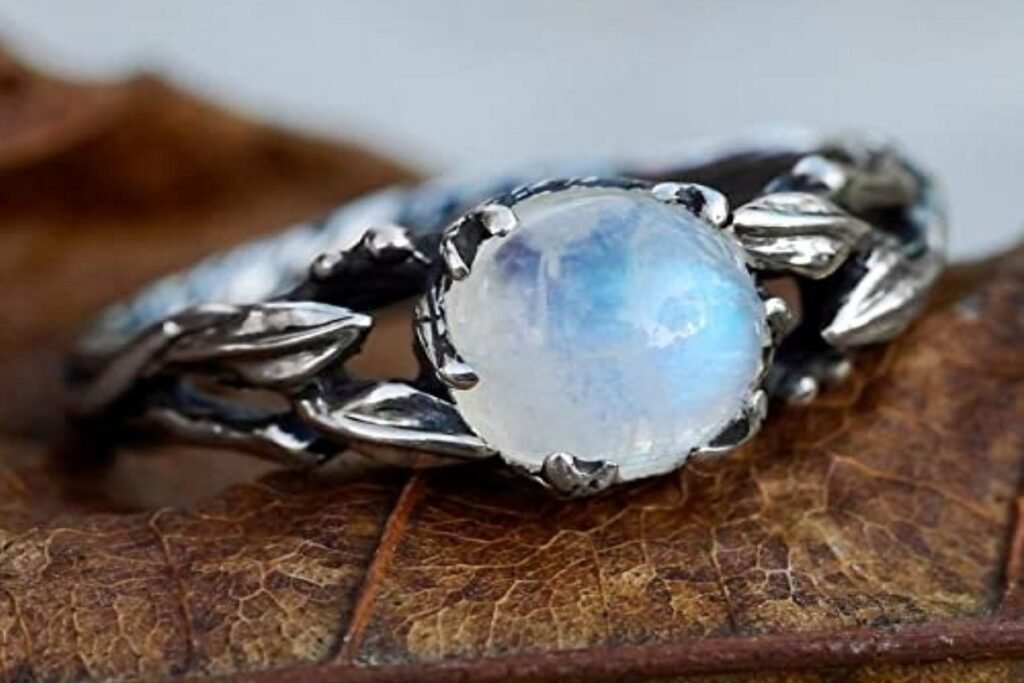
It may be among the more mystic-looking stones because of the interplay of light and the stone’s surface. Because of its poor rating on the Mohs scale, jewelers recommend that these be used solely for jewelry pieces like pendants and earrings. This keeps the stone away from too much pressure in the same way that engagement rings would, otherwise, be exposed it to.
Labradorite
The labradorite’s shine and unique blend of colors make it a mystical and magical gemstone for many jewelry pieces.
Some enthusiasts love the flashes of color that seem to replicate the northern lights. Even though engagement rings may be a nice way of displaying this beauty, its composition isn’t the most ideal. It only ranks 6 to 6.5 on the Mohs hardness scale, which makes it fairly fragile as an engagement ring stone.
Still, even if you can’t have the labradorite on your engagement ring, you can still wear it on your outfit. Labradorite drop earrings or big pendants are a great way to accentuate evening gowns and formals.
Aquamarine
Almost everyone falls for the soft blue tone of the aquamarine stone. Unfortunately, this isn’t the only soft aspect of it. On the Mohs scale, it ranks 7.5, which is relatively soft for everyday use. Usually, gemstones with this hardness rating tend to be more vulnerable to chipping.
With the aquamarine stone, you have two ways to address the issue. First, it’s possible to go for a smaller stone, seeing as how its blue color can stand out in precious metals like platinum or white gold. Second, it would also be best to use the bezel setting. While this may make the stone appear even smaller, it can beautifully encase smaller precious stones while keeping their vulnerable points protected from chipping.
Now the issue may be whether or not this may look good as a colored gemstone engagement ring. But a collaborative discussion with your favorite jeweler may make a great difference.
Choosing Colored Gemstone Engagement Rings
While toughness and durability should certainly factor in choosing your desired engagement ring stone, you can still consider other factors. For instance, how much you would want unique gemstone engagement rings rather than conventional stones. Admittedly, some stones tend to be less suited to everyday wear. But there may be simple ways to go about it.
As suggested, you can try using a smaller stone if it’s fairly soft and less tough compared to the harder gemstones. Your choice of setting can also drastically influence hardness. Prongs tend to expose more of the stone, whereas bezel and channel settings ensure coverage on many angles.
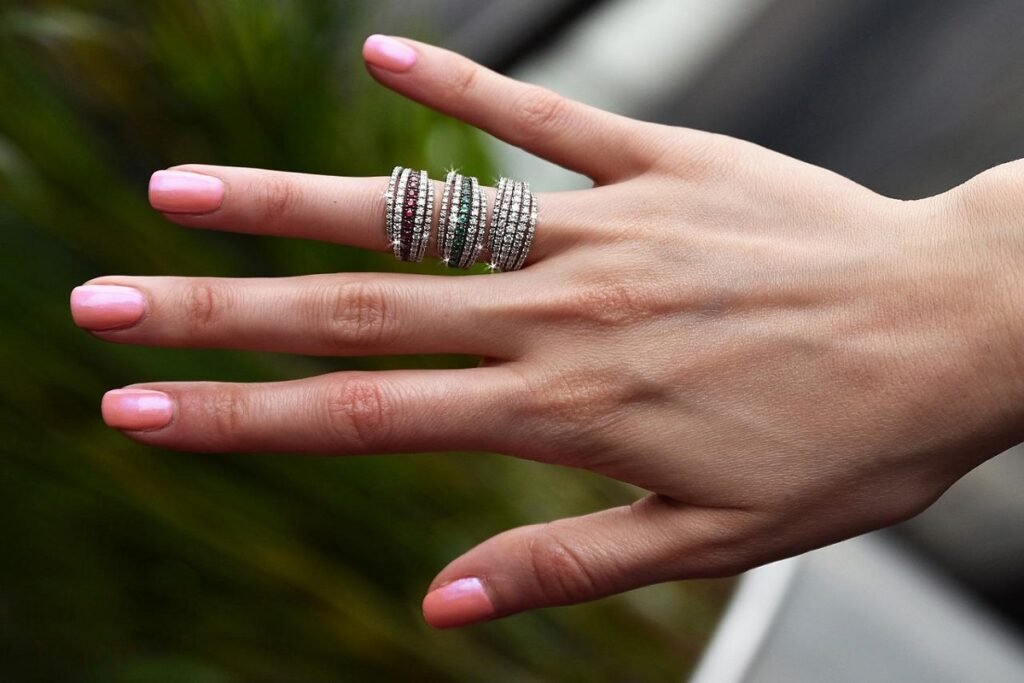
Finally, your actual usage and tendency to care for your ring can highly affect its lifespan. No matter how safe the stone’s setting may be, it can chip if the owner does not properly tend to it or do proper maintenance for the ring. Proper care and maintenance go a long way to make your ring last as long as your commitment to your partner,
Want to know more about properly choosing engagement rings? Here’s a quick guide, “How Thick or Thin Should Engagement Rings Be.”
